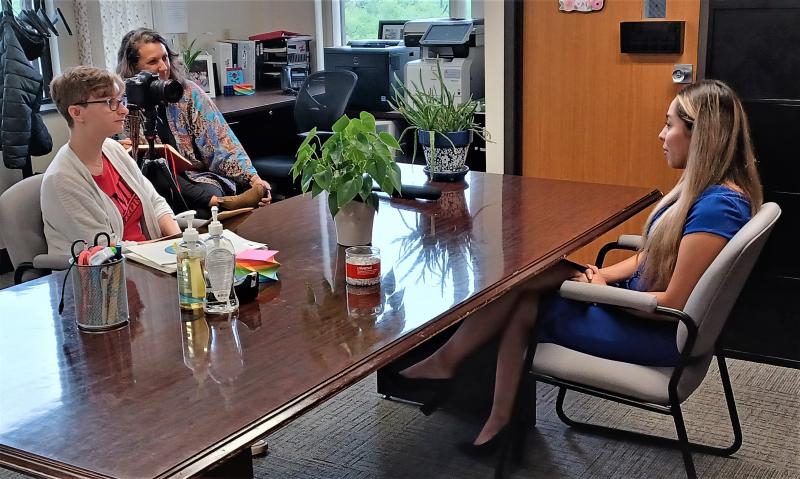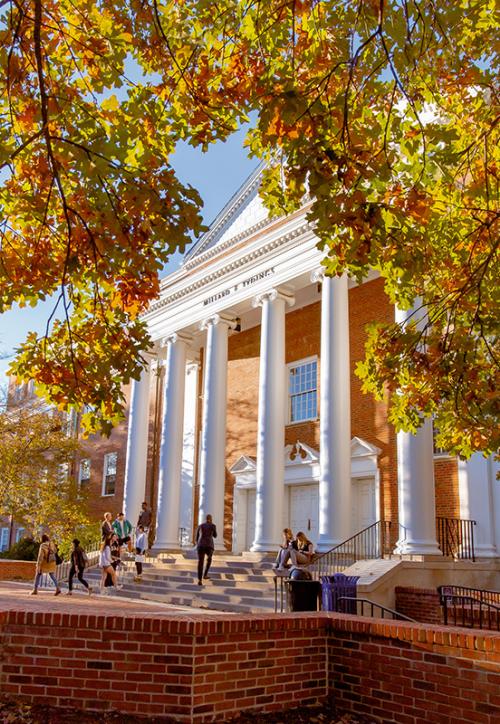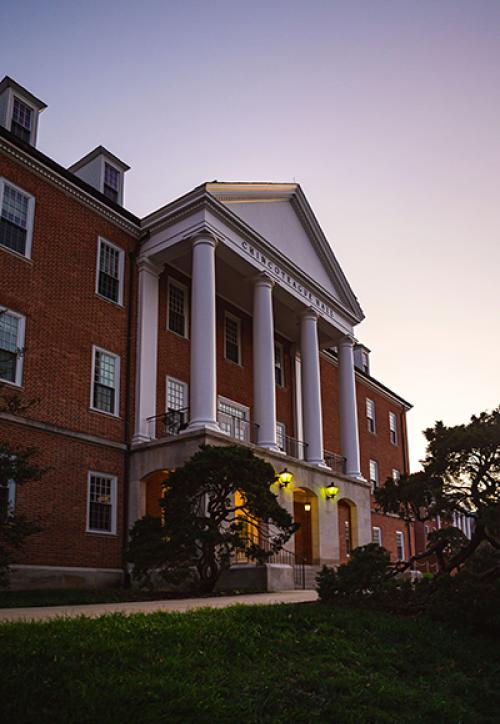New Exhibit Adds a Contemporary Twist to Coal Town’s Storied History
ANTH professor and two doctoral candidates interviewed six Central and South American immigrants to highlight what life looks like for Northeastern Pennsylvania’s latest arrivals
Hazleton, Pennsylvania is no stranger to newcomers. Since the early 19th century, people have been moving to the area in search of a better life than the one they were leaving behind; first from Ireland, then Eastern and Southern European countries like Poland, Slovakia, Lithuania, and Italy, and most recently, from the Dominican Republic and Central and South America.
This shared motivation is just one of many similarities between the immigrant anthracite coal miners that flocked to the area more than a century ago, and the Spanish-speaking community that’s been rapidly planting roots in the region since the early 2000s—a key message from a new, virtual exhibit developed by University of Maryland Department of Anthropology Professor Paul Shackel and Ph.D. candidates Aryn Neurock Schriner and Silvana Montañola.
“I've been going to Northeast Pennsylvania since 2010. My initial goal was to find the site of the 1897 Lattimer Massacre, a labor massacre, which we found using archaeological techniques,” explained Shackel. “As we were doing our research, we interviewed the local community, and we started interviewing people of the Spanish-speaking community. Then it dawned on us: These are the new immigrants. This is the next generation, and their story is not yet part of the story of the region.”
In 2015, Shackel started working with Bode Morin, Historic Site Administrator for the Anthracite Heritage Museum, with the Pennsylvania Historical and Museum Commission. Together, they came up with a plan to expand the interpretation of the Anthracite Heritage Museum to include oral histories of both new and long-time residents of the region.
“This area is rife with racism,” Shackel said, noting the city of Hazleton’s 2006 attempt to pass anti-immigration legislation, and how tensions worsened during the COVID-19 pandemic, when many immigrant factory and fulfillment center workers were blamed for spreading the virus. “We thought that if we could find a way to connect the histories of the traditional older population and the new immigrant population, that would help to bring some sort of mutual understanding between the groups. That was the basis for the virtual exhibit, to connect the new immigrants with the history of the anthracite region.”
 Through their conversations with the region’s newest residents, the UMD-led team was able to do just that. Each oral history participant shared facets of their life—from their motivation to move to the Hazleton area, the treatment they and their peers received at work and in the community, and how certain resources helped them navigate their new life—that, details aside, likely would have resonated with their neighbors’ ancestors.
Through their conversations with the region’s newest residents, the UMD-led team was able to do just that. Each oral history participant shared facets of their life—from their motivation to move to the Hazleton area, the treatment they and their peers received at work and in the community, and how certain resources helped them navigate their new life—that, details aside, likely would have resonated with their neighbors’ ancestors.
“Both generations started as unskilled laborers. When the miners came in the 1900s, they were laborers, they weren't miners. They had to work up to a standard and pass a test to become miners. And people like Amilcar [one of the narrators in the exhibit] came from Peru to pick tomatoes, and now he runs a Spanish-language newspaper,” continued Shackel. “Much like the miners 150 years ago, the people featured in this exhibit have stories about searching for a better life, climbing the economic ladder, and facing injustices.”
The oral history project’s potential impact on social justice earned its support from the College of Behavioral and Social Sciences’ Dean’s Research Initiative, and the Pennsylvania Historical and Museum Commission. The latter provided support that included housing for the graduate students in the Eckly Miners’ Village—a small town where mining families once lived—during their two-week interview stays in June and July 2022.
“I liked collaborating with an interdisciplinary team with people from across the country, as it drove home how this project reaches beyond the Anthracite Heritage Museum or the University of Maryland,” recalled Neurock Schriner, alluding to her work with Montañola, who provided translations, and Aubrey Edwards, a graduate student at the University of Wyoming, who served as the team’s videographer. “Hopefully visitors will be able to step back and see modern immigration as just the latest moment in the region's long history of immigration … [and] see that newer residents are not so dissimilar from people who have lived there longer.”
The virtual exhibit currently lives on the Anthracite Museum website. In the future, Shackel and Morin hope to add African American, Native Americans, and LGBTQ+ voices to the exhibit, as well as give the exhibit a permanent home inside the museum in 2024.
Published on Mon, Jun 26, 2023 - 11:07AM



